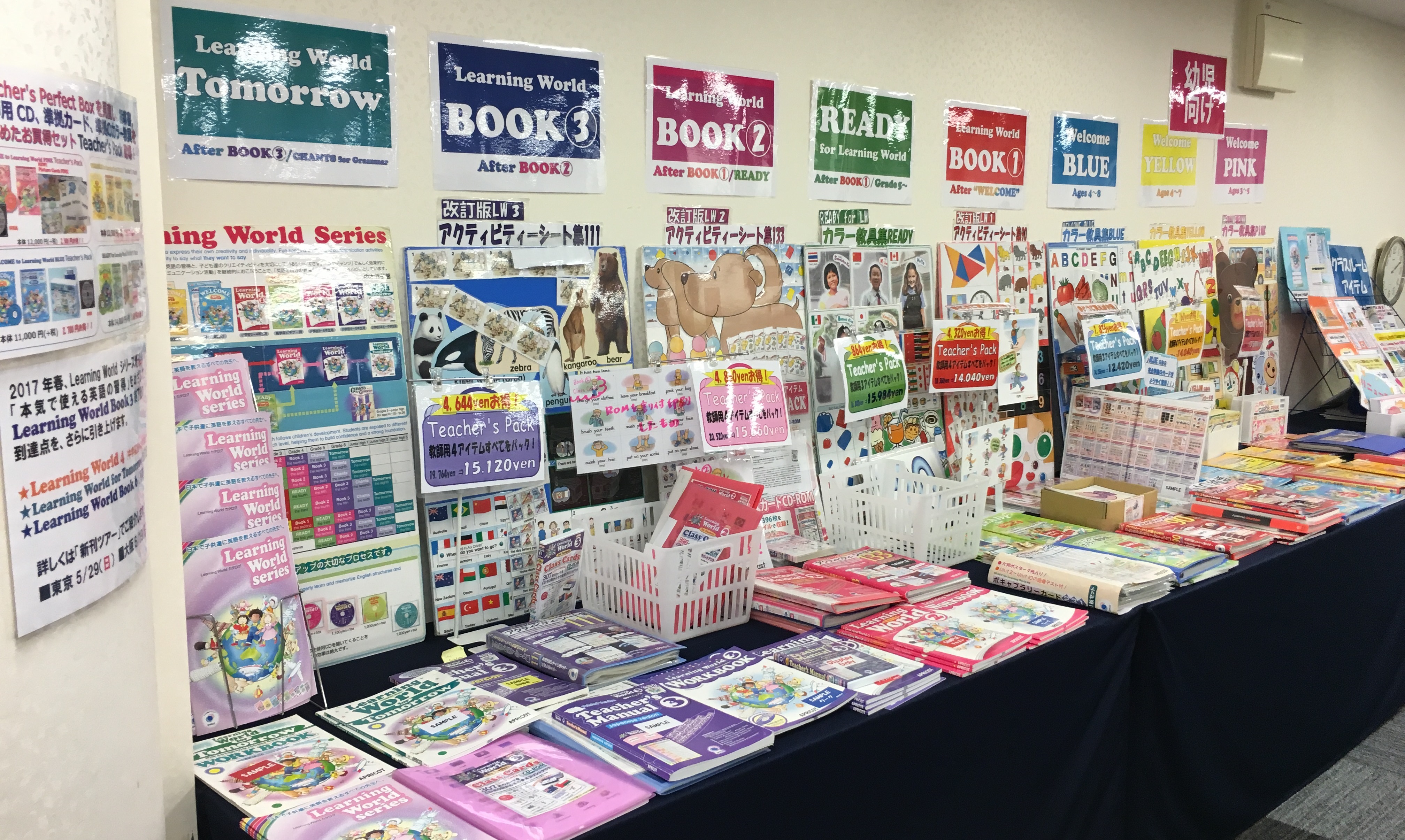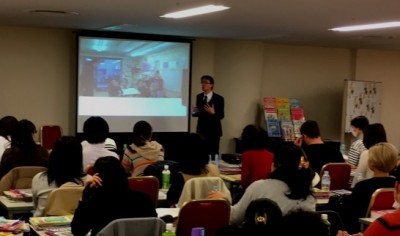

- 54. 10 Useful Pieces of Advice for Teaching with LEARNING WORLD #9 & 10
- 55. “Happy New Year!” “I don’t say that.”
- 53. Halloween 2019
- 52. READY Workbook Pg. 17
- 51. English-Uplift 1-Day Seminars
- 50. READY Workbook - vocabulary copying activity
- 49. 10 Useful Pieces of Advice for Teaching with LEARNING WORLD #8
- 48. 10 Useful Pieces of Advice for Teaching with LEARNING WORLD #7
- 47. 10 Useful Pieces of Advice for Teaching with LEARNING WORLD #6
- 46. 10 Useful Pieces of Advice for Teaching with LEARNING WORLD #5
- 45. 10 Useful Pieces of Advice for Teaching with LEARNING WORLD #4
- 44. 10 Useful Pieces of Advice for Teaching with LEARNING WORLD #3
- Kindergarten aged students
- Lower Elementary-school aged students
- Upper Elementary-school aged students
- Junior High and older students
- Others
35. Tomorrow Pg 18! A little at a time!!
Almost every activity that I bring to class is designed specifically to MAXIMIZE student output of English. Once students have traveled through the LEARNING WORLD series and have arrived at “TOMORROW” they will have a large background of English to access. If their learning experience has also given them a positive attitude towards using English, your activity can produce some interesting student output. An important strategy to produce student output is to present a large amount of material a little at a time.
In a class of 5 junior high students currently studying with TOMORROW, I recently did the following activity.
We first discussed the idea of a “plan”. We agreed that “a plan was a series of steps towards a goal.” We agreed that sometimes we all need to make plans. We also agreed that sometimes we all need to listen to other people’s plans, and give comments.
Using the whiteboard I explained that if we hear a plan that we think is good, we say “It’s a good plan!” and add a supporting comment (+1) If we hear a plan that we think is not so good, we say “It’s a nice plan…” and add a comment that begins with “But…”
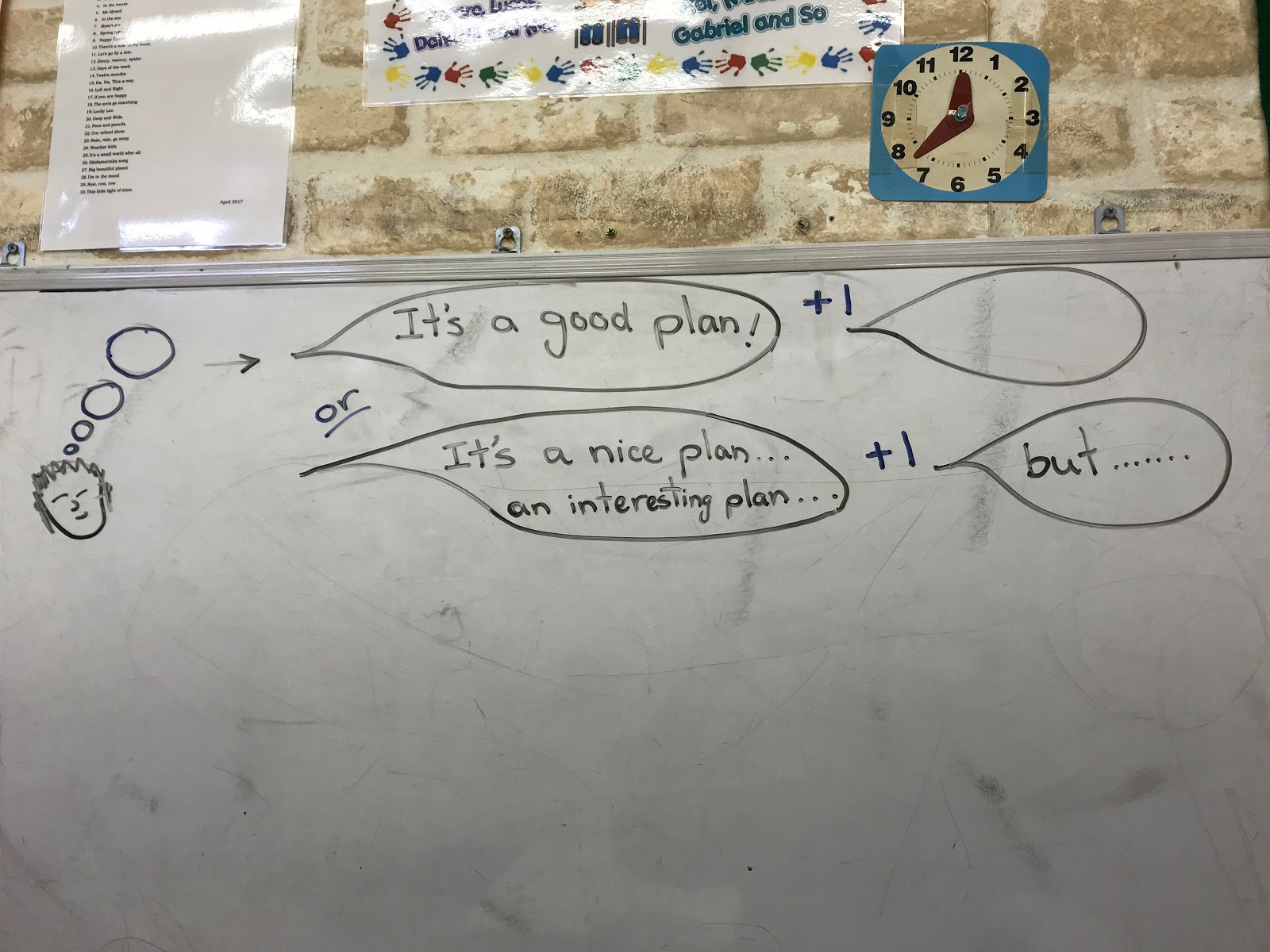
With that now clear, I told them “I want to travel around the world. Here is my plan.”
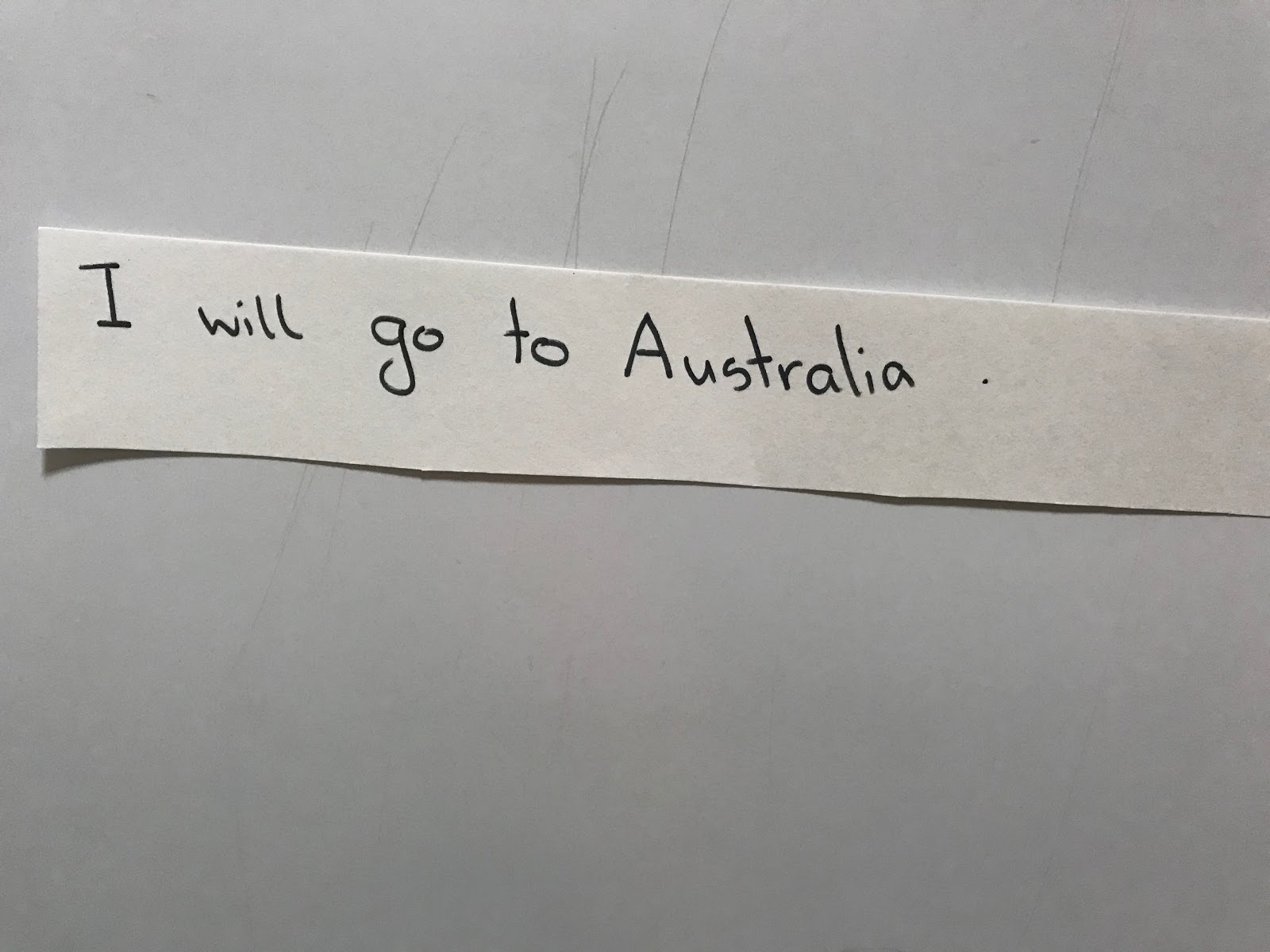
“l will go to Australia.”
The end.
The students quickly responded:
“It’s a nice plan… But… is that it?”
“It’s a nice plan… But… Australia only?” etc.
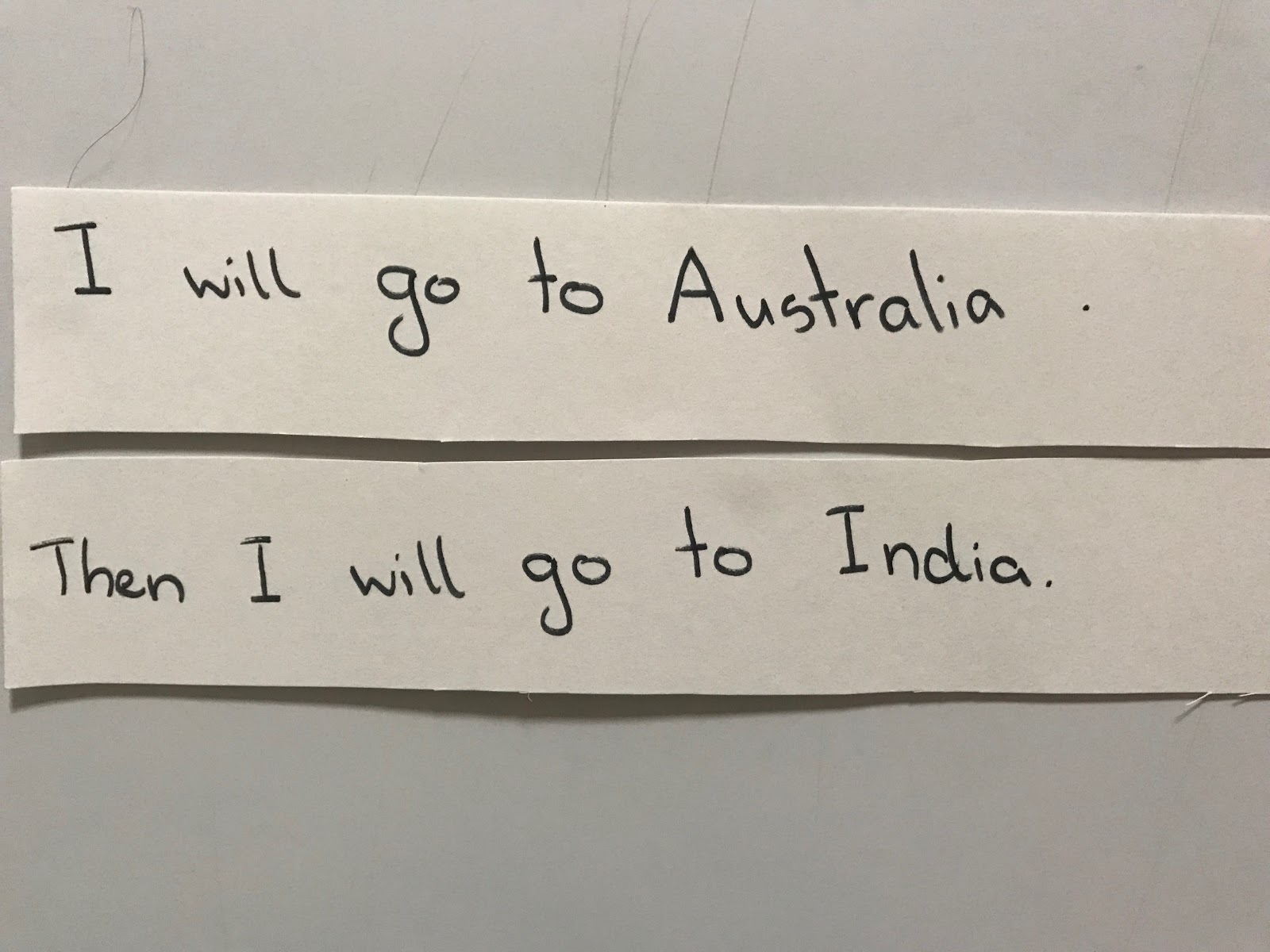
“I will go to Australia.
Then I will go to India.”
“It’s a nice plan… but only Australia and India?”
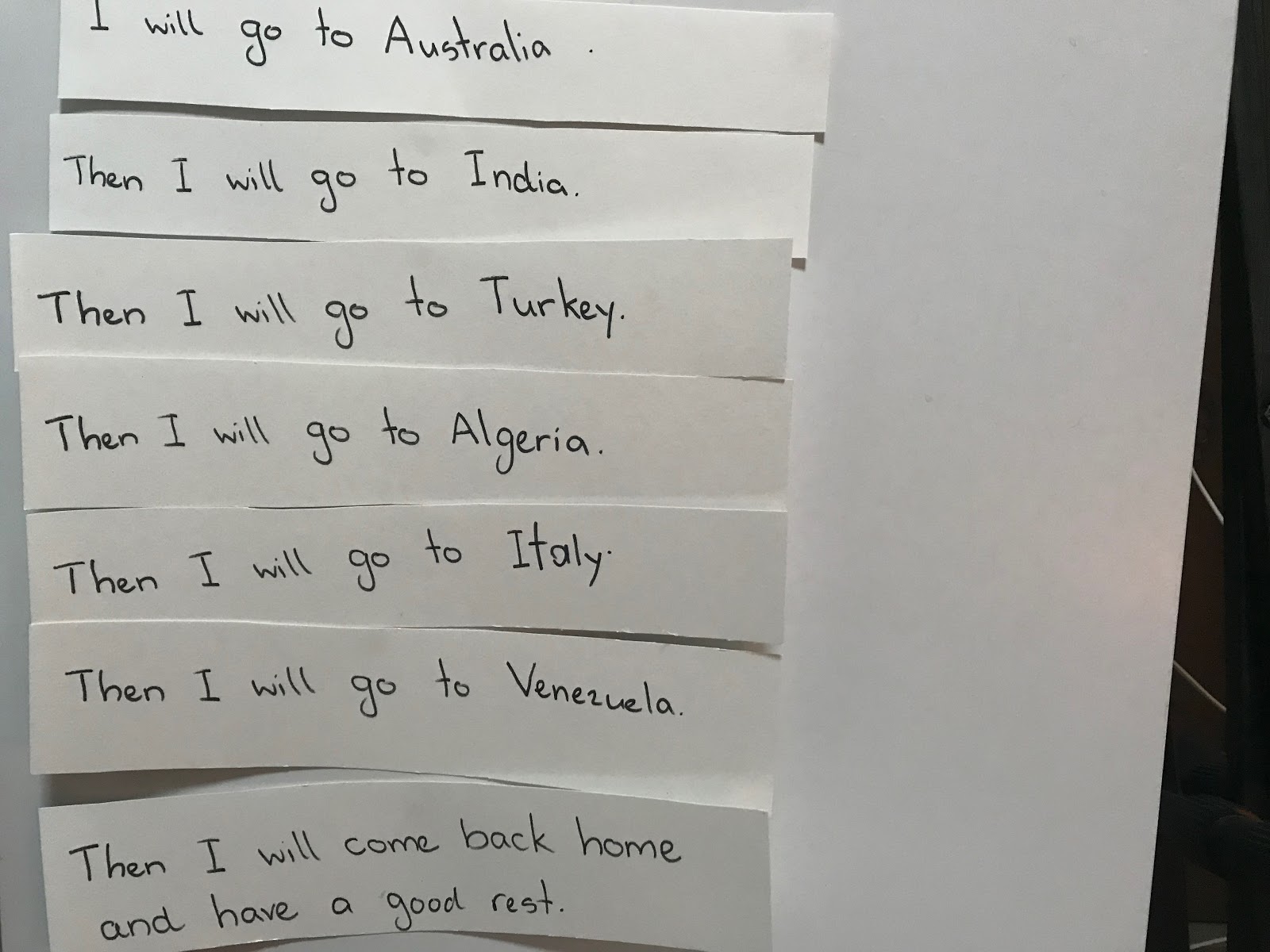
“It’s a good plan! Very busy!”
“It’s a good plan! I want to go too!”
However one student said “It’s a nice plan… But… why these countries?”
Another student added “It’s a nice plan… But… why this order?”
Another student added “It’s a nice plan… But how long will it take?”?
The first student then returned “It’s a nice plan… But… do you have money?”
One by one I began adding details to the plan. With a photo, I added “and see Angel Falls” to Venezuela.
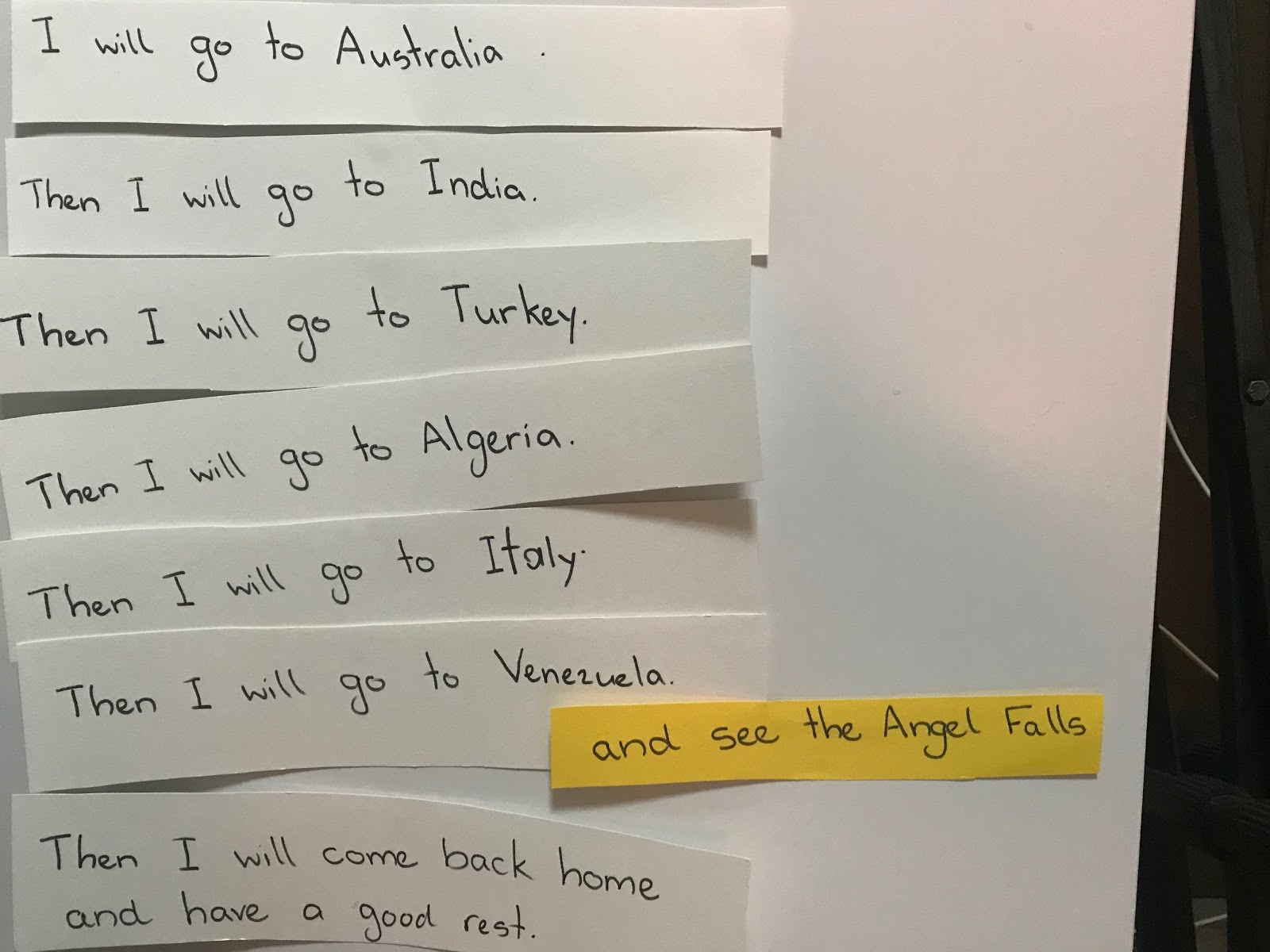
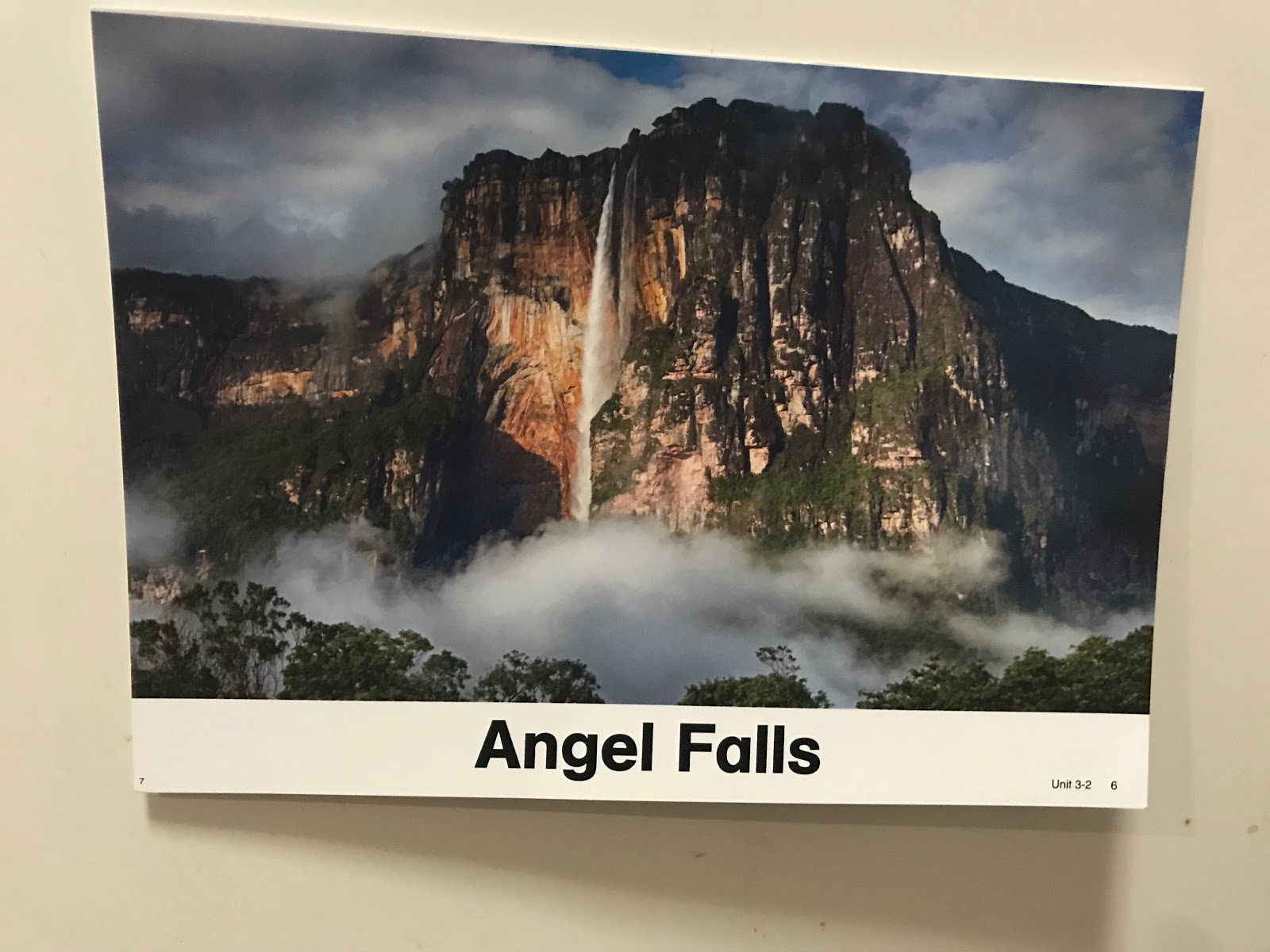
“It’s a good plan! It’s very beautiful!”
After some discussion, we put “and ride a camel” with Algeria.
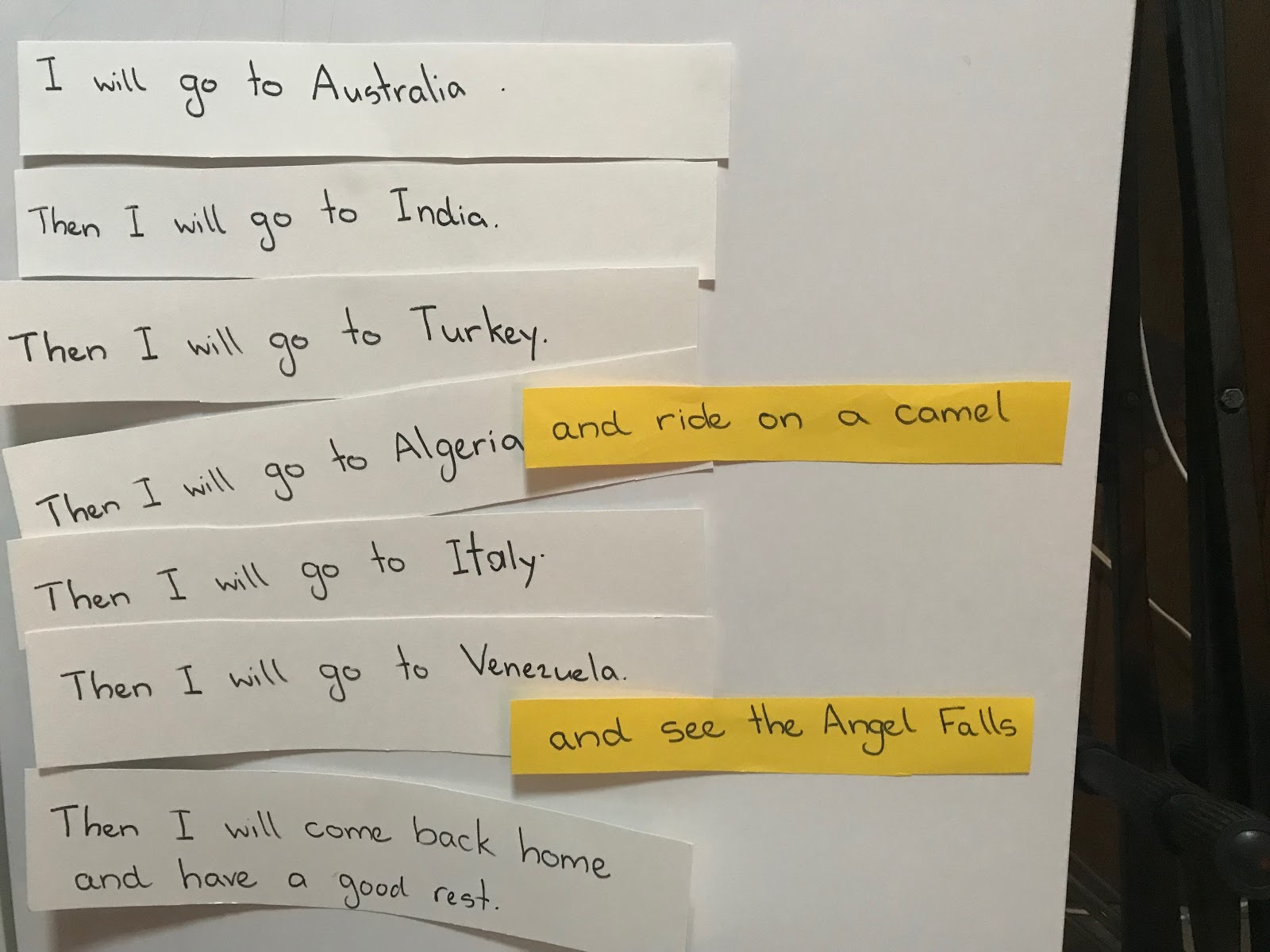
“It’s a nice plan… But… can you ride a camel?”
After some discussion and the picture we put “and climb Uluru” with Australia.
“It’s a nice plan… But… How will you climb it?”
“It’s a nice plan… But… maybe dangerous?”
After some discussion and the picture we put “and swim in the Ganges River” with India.
One smart boy said “It’s a nice plan… But you can’t swim here. This river is special.”
He’s totally right.
As the details were added, the students became very imaginative with their English on ways to discredit it: “It’s a nice plan… But…”
The plan in its entirety appears on page 18.
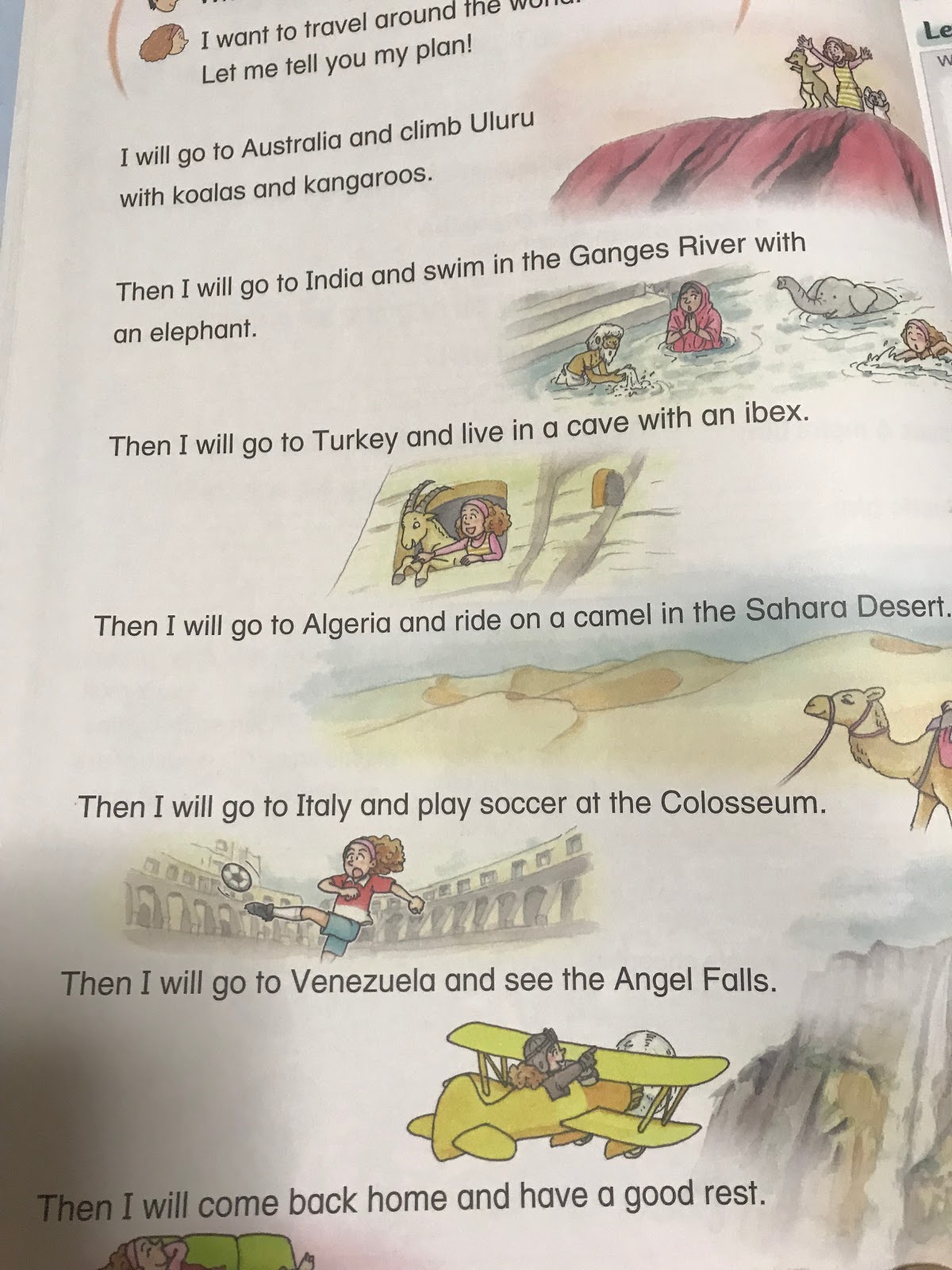
Because this material was presented a little at a time, the students were given the opportunity to use a lot of their own English as they analysed its detail. You can imagine the English that the students expressed in response to “climb Uluru with koalas and kangaroos” and “live in a cave with an ibex” and “play soccer in the Colosseum”!
For the teacher it involved some preparation, but the rewards in terms of student output are certainly worth it.
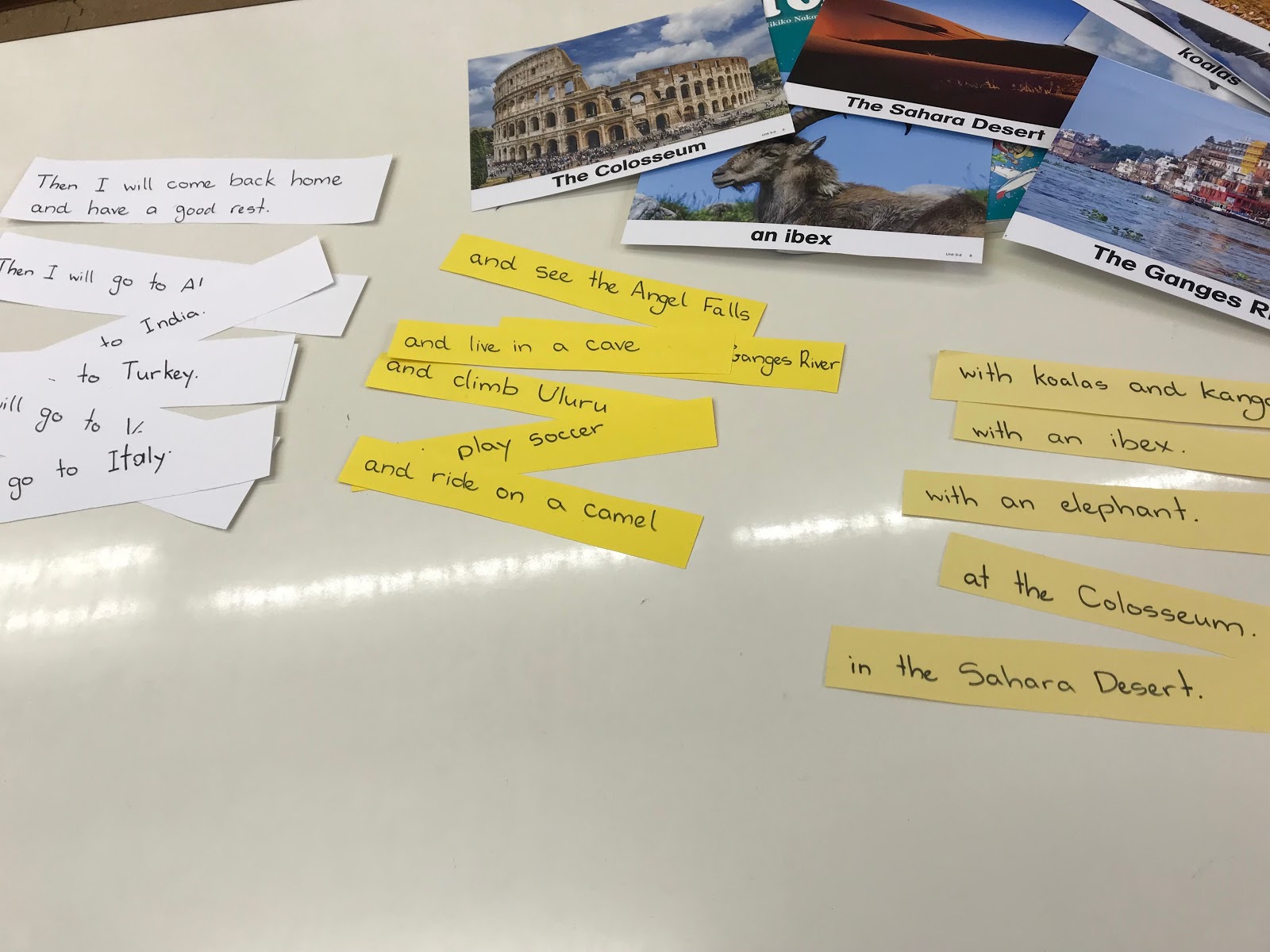
34. This Year’s LEARNING WORLD Workshop!!
The LEARNING WORLD Workshop is a great opportunity to increase your understanding and application of the LEARNING WORLD textbooks. But it’s also much more. It’s an opportunity for us all to increase our understanding of our own teaching. Because we are so busy throughout the year, we rarely get the chance to analyse our teaching approach and our actions in the classroom.
If you enjoy teaching, you should really attend the LEARNING WORLD Workshop.
If you DON’T enjoy teaching, you should really attend the LEARNING WORLD Workshop!
Incidentally, on the Workshop application form, APRICOT asks “Why have you applied for this year’s Workshop?” Most of the answers on applications received so far are summarized here:
〇これから英語教室をスタートしたいので、教材を知りたい!
I want to start an English classroom so I want to know about materials.
There are several things to consider when selecting materials for a new school. Perhaps the most important one is “What kind of result do I want my students at my new school to achieve, and what do I want them to become?” Definitely expect this to be addressed at the Workshop!
〇高学年のレッスンの進め方、どのレベルまでもっていけばいいか、知りたい!
Because I want to know the flow of upper-elementary students’ lessons. To what level can I bring them?
Upper-elementary school students make for very interesting students. Their changing attitudes to study (of not just English) marks a need for adjustment in our attitudes to them. The learning experiences we can bring them can be very rewarding!
〇Book4,Book5の指導方法とアイディアを教えてほしい
Because I want ideas on how to teach Book 4 and Book 5.
〇中学生にBook4,Book 5を使う予定があるので!
Because I plan to have my JH students use Book 4 & Book 5.
LEARNING WORLD Books 4 & 5 are new (or revised) additions to the APRICOT catalogue. They will definitely be given attention at the Workshop.
〇毎回参加してる★
Because I attend every year.
〇前回、前々回、参加してみて、よかったので・・・!
Because the last Workshop and the one previous to that was good.
Those teachers who answered this way didn’t have any specific requests. They indicated that their attendance at previous LEARNING WORLD Workshops was beneficial.
I agree!
The Workshop brings many issues of the English classroom to the fore. It allows us to reflect on most aspects of our teaching, and can be very eye-opening!
So if this is your first attendance at a LEARNING WORLD Workshop, please look forward to it! I’m confident you will enjoy it.
If this is not your first LEARNING WORLD Workshop, it’s going to be great to see you again! Please look forward to it! I’m confident you will enjoy it again.
If you haven’t yet applied, come on! Do it now!!
33. Springboard again! Of course!!!
My blog has been a little quiet of late… Every year after the summer vacation, preparation for the autumn workshop season starts. This involves important schedule negotiation with APRICOT, agenda-setting, videoing lessons and consolidating ideas. Very little is on my mind right now except workshop content… For sure I want to add thoughts and experiences to the blog, but in doing so I may unwittingly give workshop content away prematurely!!
In October and November I will be presenting at two Nellies’ Workshops; one in Osaka (Oct.15th) and the other in Tokyo (Nov.5th). The topic is: helping students to develop reading skills with the SPRINGBOARD Readers. I’ve given several presentations on this topic over the years, and there is a blog entry here as well.
https://www.apricot-plaza.co.jp/category/matthew/matthew-others?page=2
And for good reason. I’m still convinced SPRINGBOARD is the best material to help kids get started with reading, remain motivated to read, and generally feel success with reading.
The student in the video below is eight years old, and has been studying English for two years. Here she is reading “Molly Monster’s Party” from Level 4.
She’s quite good, don’t you think?
Now, what preparation did she do to get herself able to read this book?
Well, first of all she has read all the books in the earlier levels. Earlier exposure to most of the vocabulary in this story of course helped her. During her initial challenge of the book however she mispronounced the words “some” and “made”. And she appeared to not understand their meanings.
Look at the following photos for a visual understanding of how I helped her with “some”:

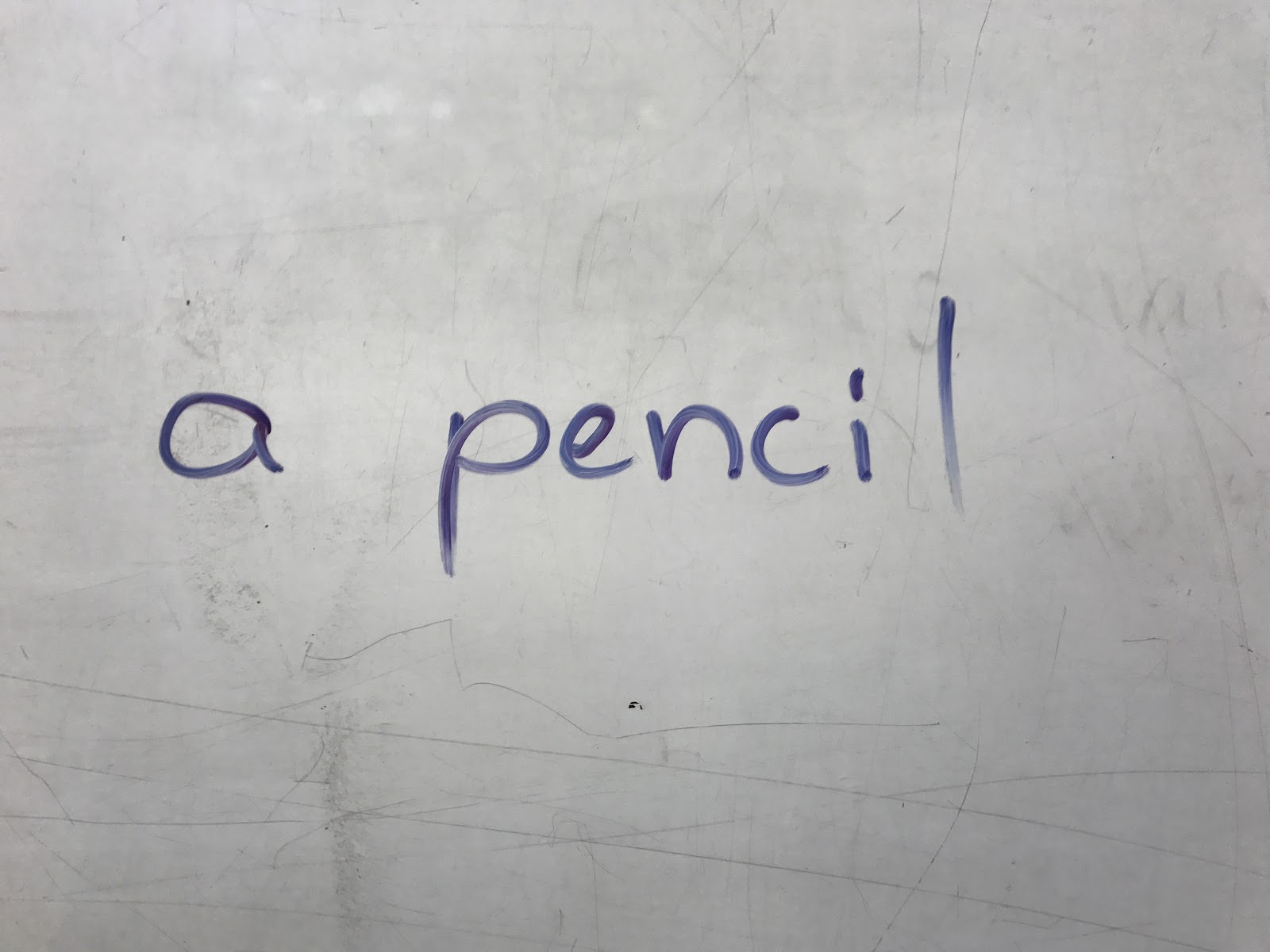
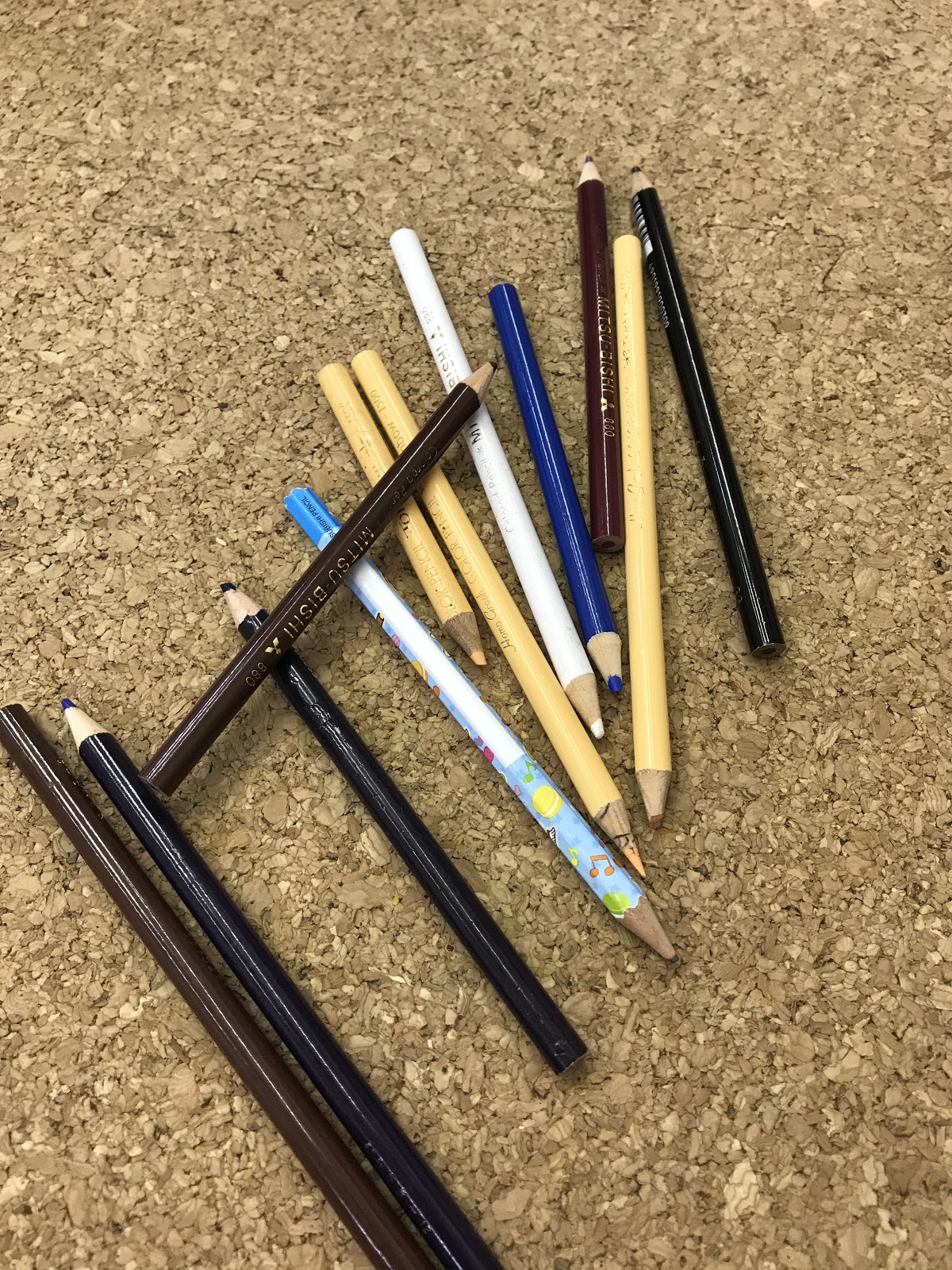
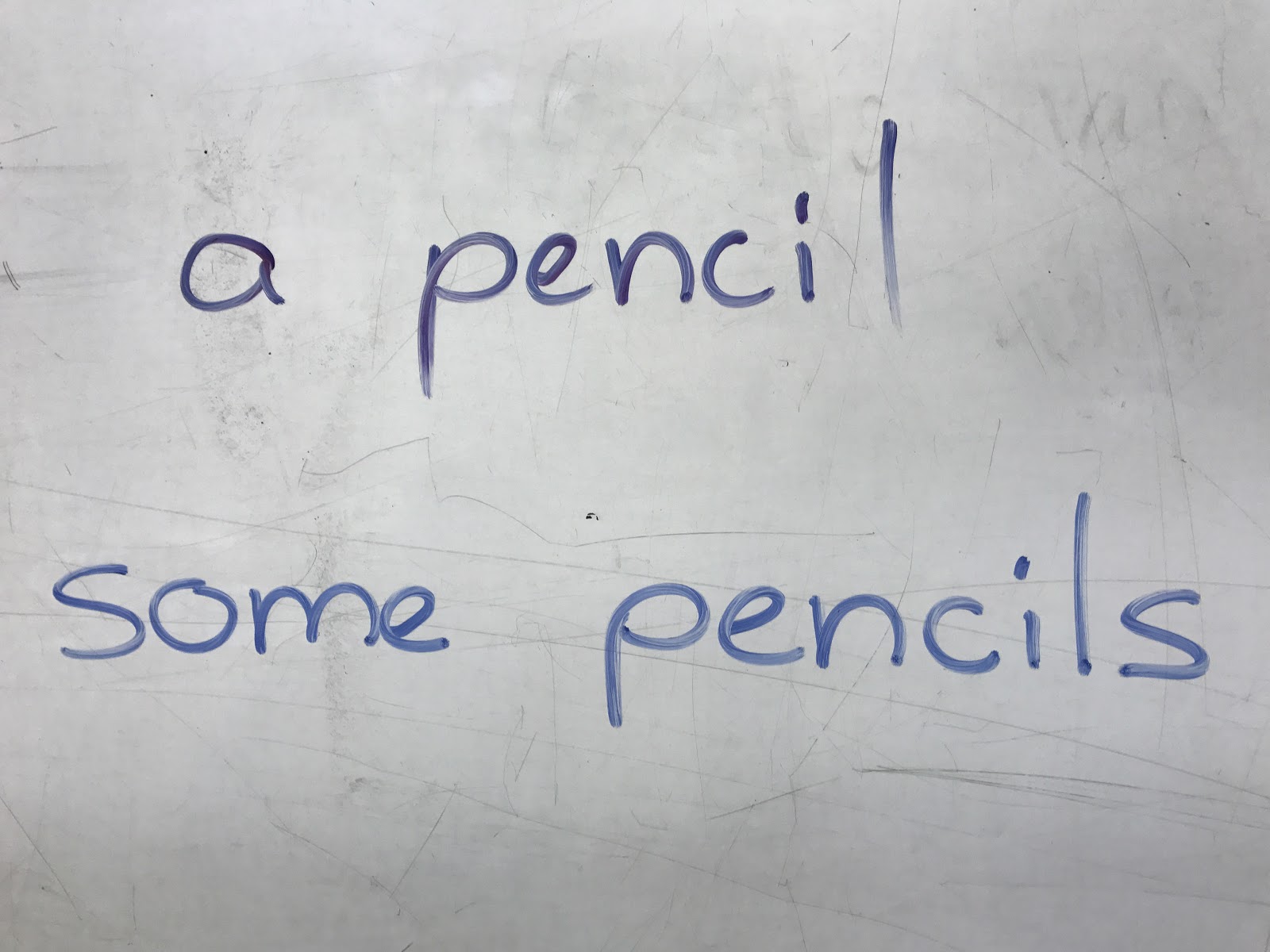
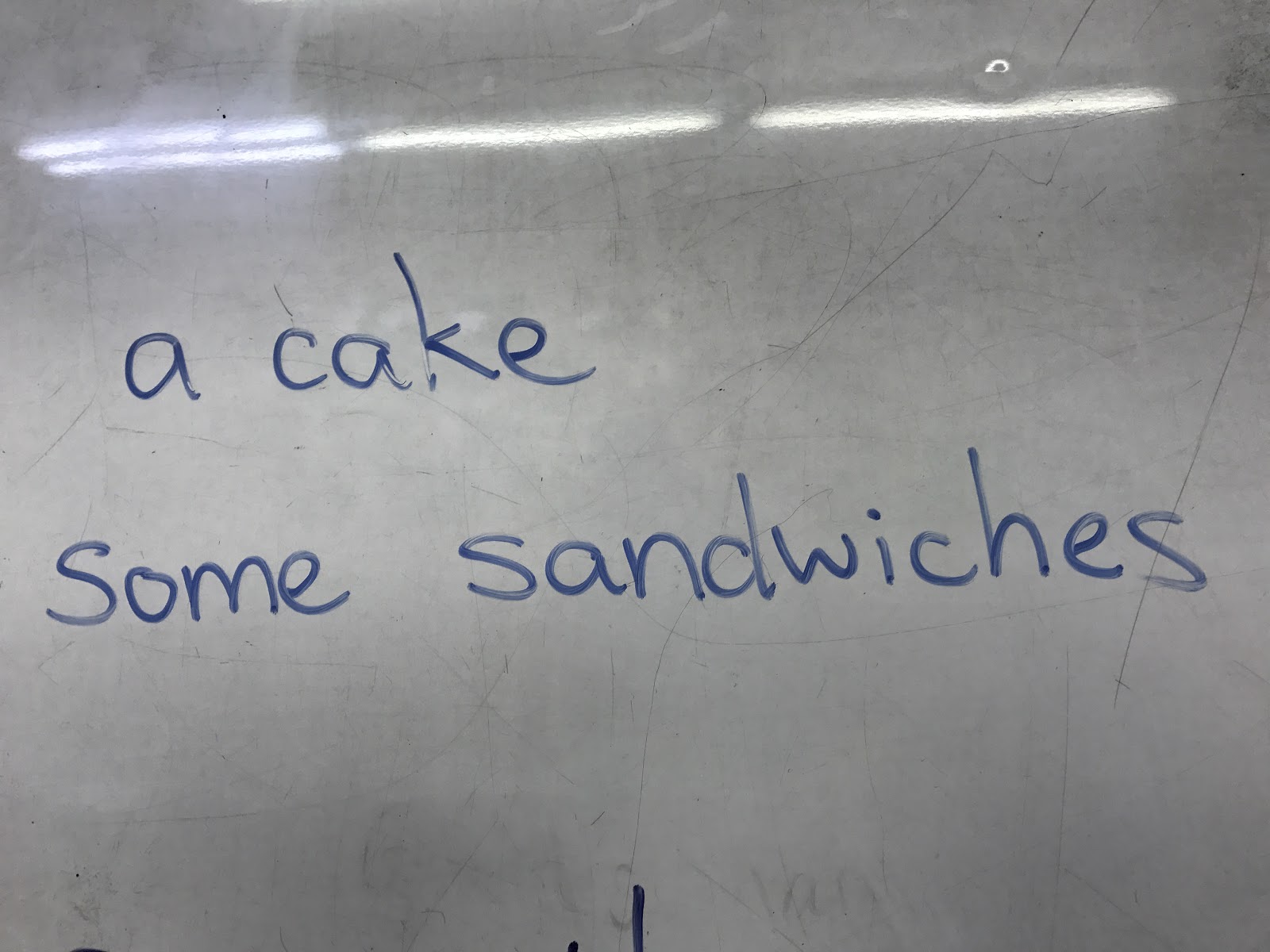
Look at the following photos for a visual understanding of how I helped her with “made”:
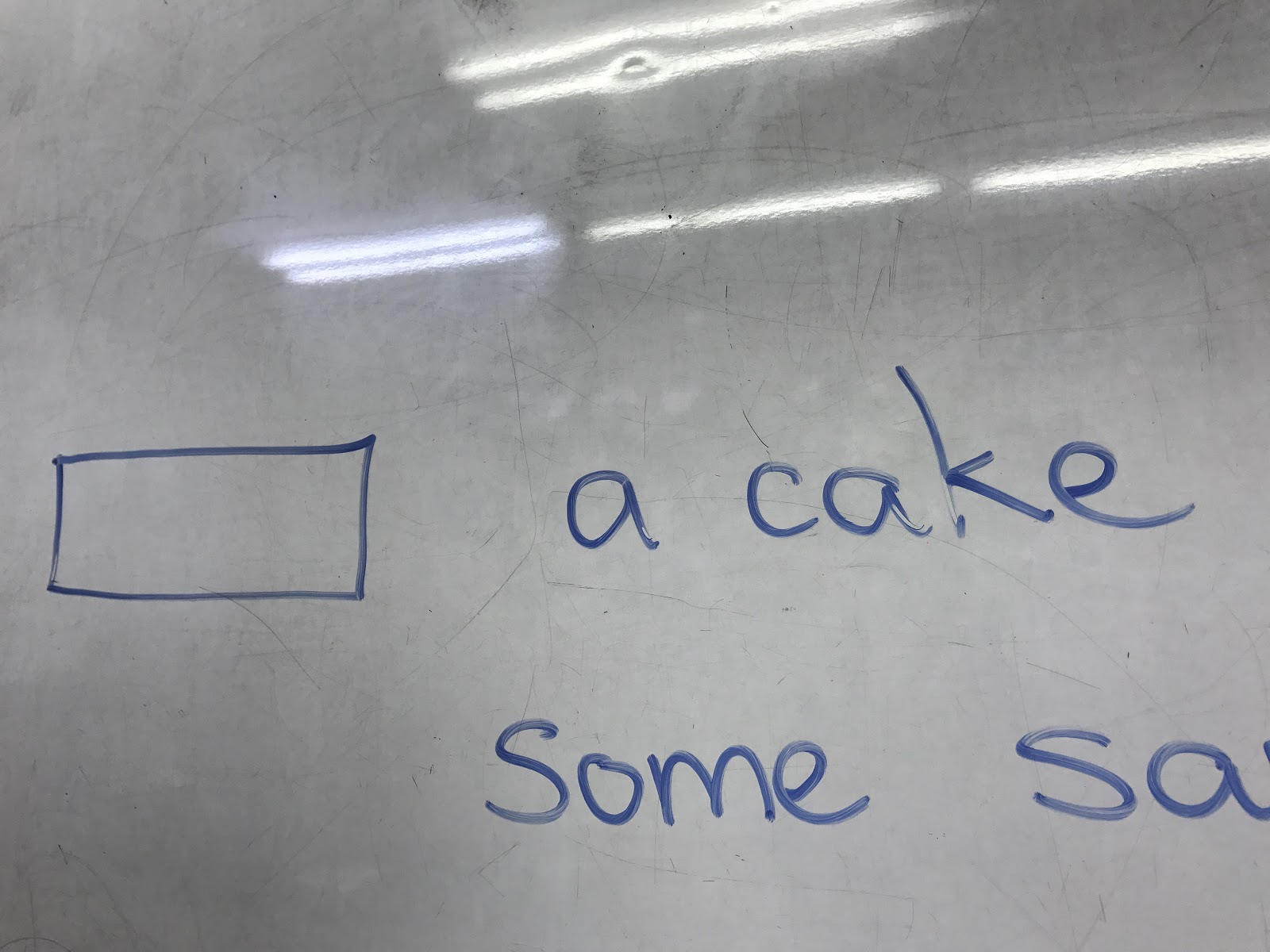
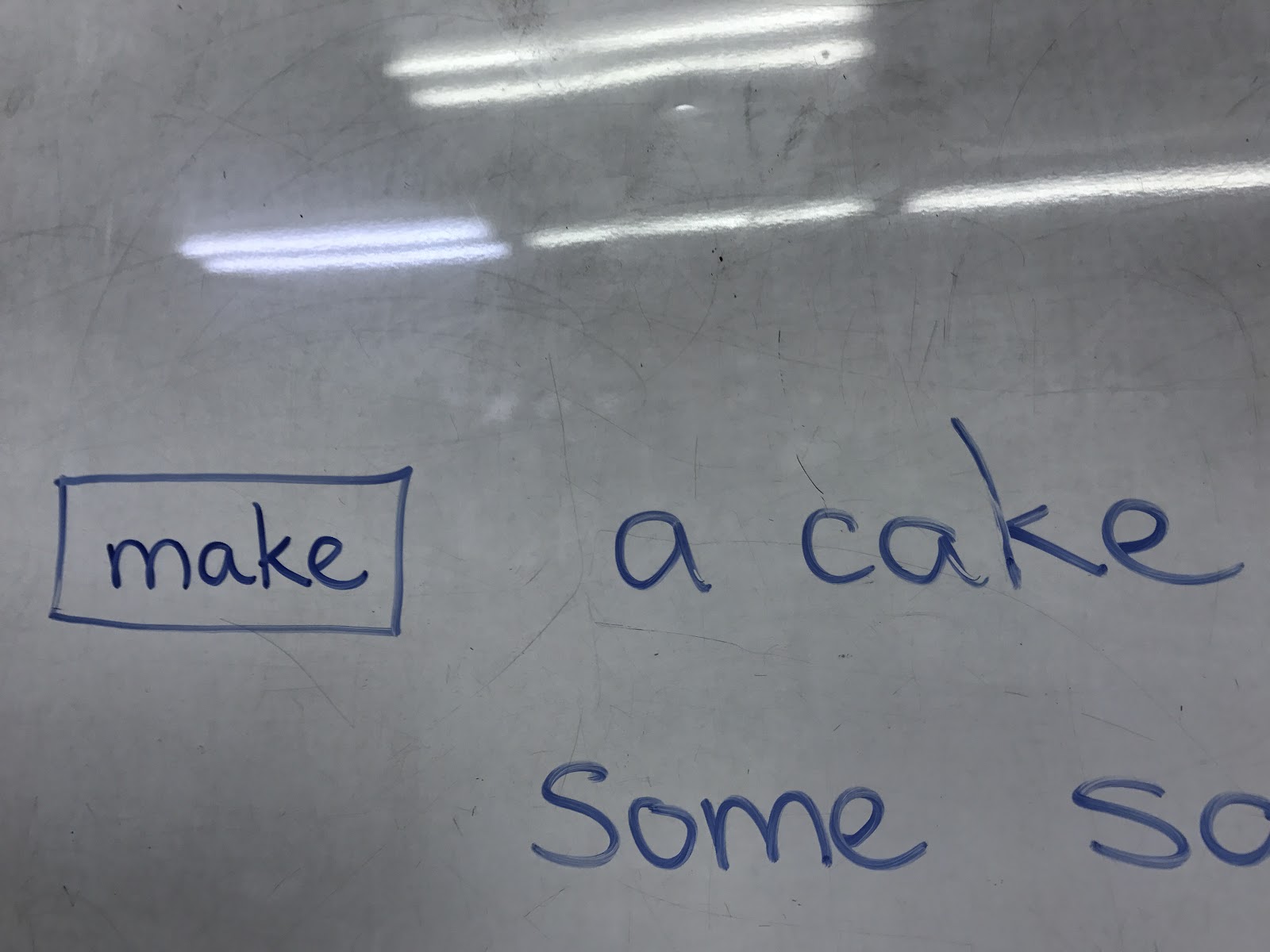
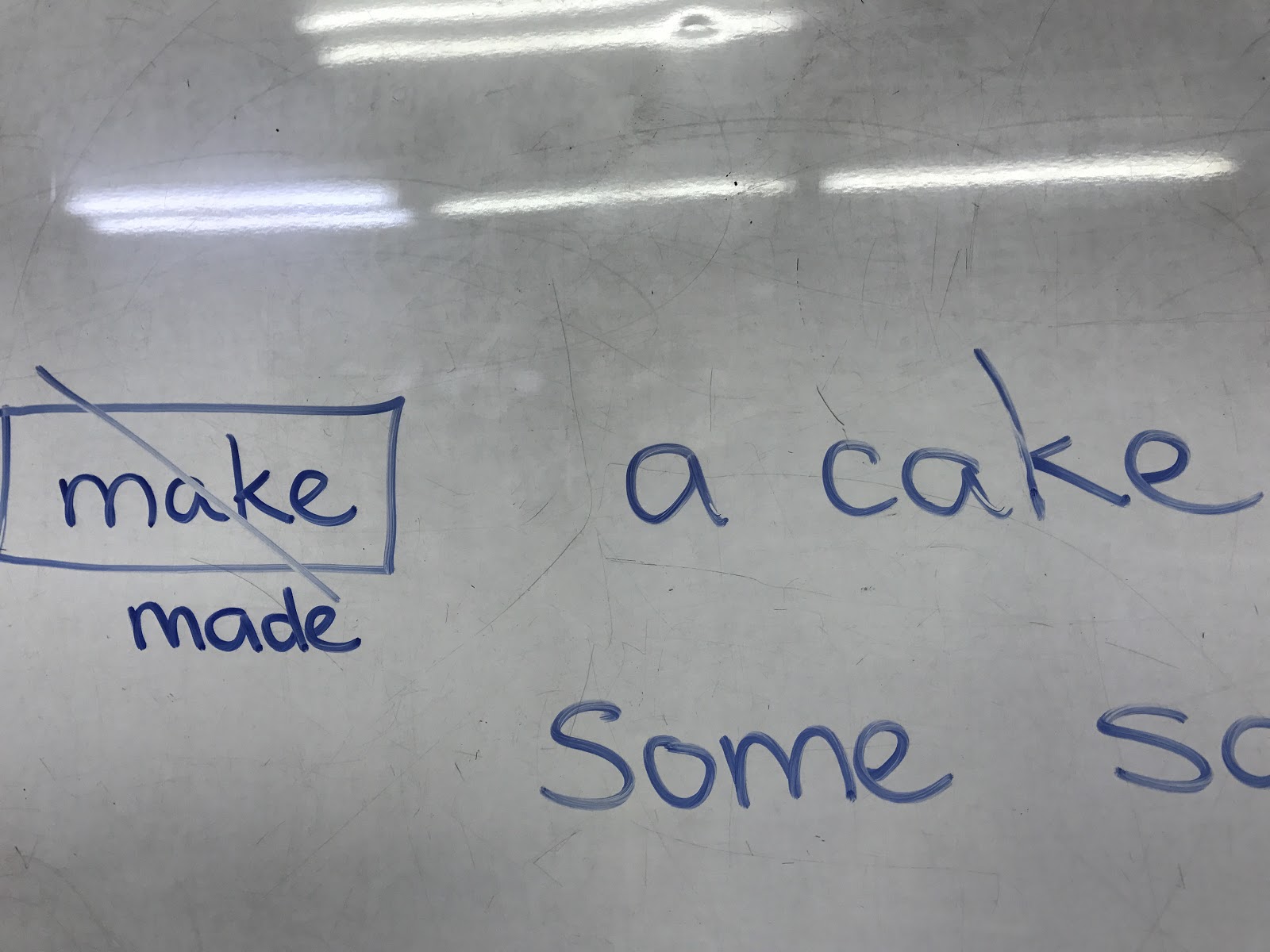
With past tense verbs, I always use the term “finished action”. When “make” is finished, we say “made”.
With this simple preparation, together with her other experiences within a structured reading program, she was able to read the book.
Hey, if you are in Osaka or Tokyo on those weekends, it would be great to see you there at the Nellie’s workshop!!
32. READY: “My House” (page 33)
On page 33 of READY, the textbook’s four characters introduce their house.

At the bottom of the page, students have the opportunity to introduce their house.
In my classes, I start this page with my students using my copy of the textbook. I show them the page, with the photos covered:

Students’ curiosities can be aroused when you hide the photos. Wanting to know why the photos are covered, their attention is drawn to the written English, and their subsequent need to read it is charged.
As a class, students read together Kaetlyn’s “This is my house. I live in Vancouver, Canada”. In most cases, students need help with “Vancouver”, but not with “Canada”. What’s important is that students understand independently that Kaetlyn’s house is in Canada. At this point, students’ eyes are glued to the paper hiding Kaetlyn’s house as it’s very slowly removed…

Kaetlyn’s house is quite large compared to Japanese standards, and it may extract interesting comments from students.
The process of reading and revealing each photo continues for all four characters. The reading of “Guadalajara” definitely requires our assistance, but at “Bangkok” and “Shanghai”, give students a little time to make an independent attempt. Many students have heard of these cities, and they can employ basic phonics rules to try and read them.
Now, if you ask students to draw a house, they will likely offer a very simple sketch of a few walls, a roof, a door and some windows. And from experience, students tend to make very little effort on a drawing of their own actual house. To encourage students’ imagination for the bottom section of the page, I present a number of photos of a great variety of houses, all of which were the result of googling “Amazing houses”:

Students are usually very amazed and inspired. Obviously, the moment can be savored by students choosing which houses they like and dislike. Then having students complete the bottom section of page 33 with the instruction that they don’t necessarily have to draw their real house, can open them up to some interesting ideas and overall good quality pictures…






31. READY: “On the School Ground”
This Unit introduces verbs in their simple form, and includes the expression “Let’s ~”. , In the illustration Kaetlyn is holding a soccer ball, which suggests that she is not yet playing it. While turning to Yuko she is running and pointing to an area of the playground where other kids are playing the sport. The whole illustration makes the meaning of “Let’s play soccer” very clear.
Because the illustration makes for easy input of the target language, it’s tempting to have students simply open their textbooks and teach from there. Although we hear at APRICOT workshops that it’s beneficial to introduce the target language to students in a communication activity before they open their textbooks, it’s not always easy designing a meaningful activity on certain target expressions – and “Let’s ~” is a case in point!
I recently gave a lesson on this page. To encourage student interaction and to give students more sight-reading experience, I cut out the faces of a photocopied version of page 28 and prepared hand-written English of the verbs. The verbs were written in the progressive form
( ~ing). As a class, students read each verb and matched them to a face. Throughout this process textbooks remained closed. Matching was done based entirely on imagination.
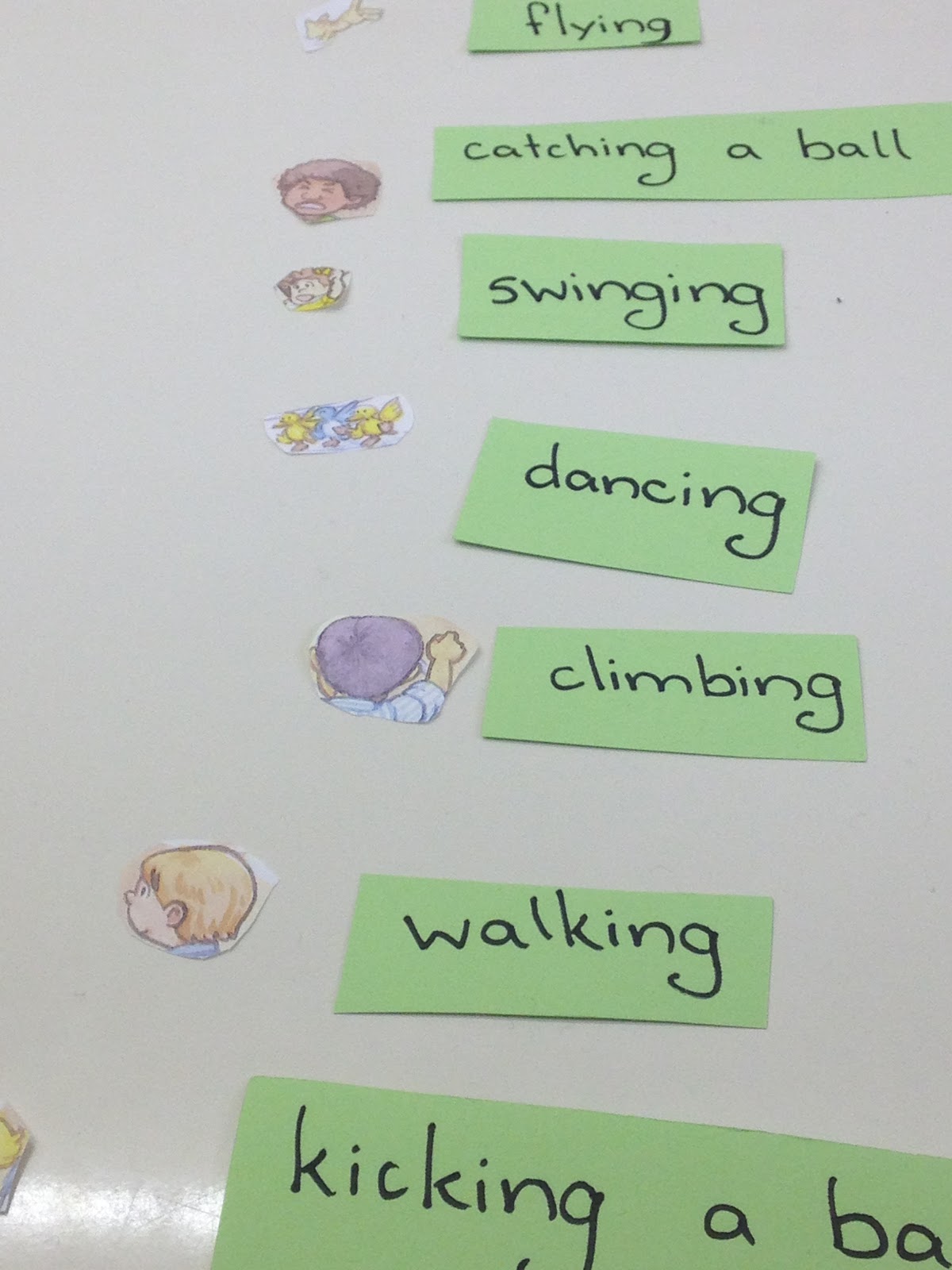
The students had a fun time with this activity. They all worked together to read the word-cards. Certain expressions on the faces made certain verbs highly unlikely, but their combination made amusing imagery.
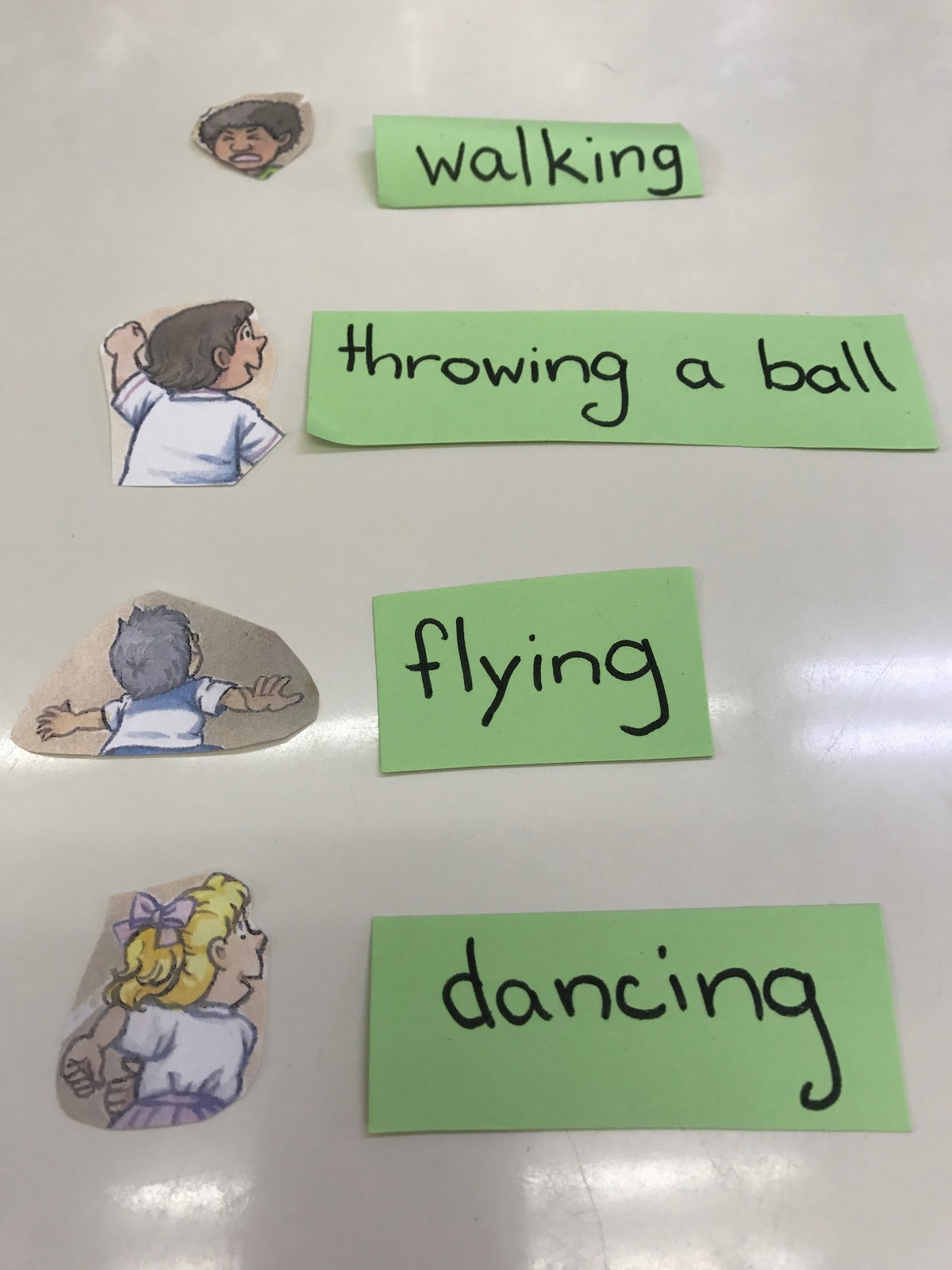
In the end, textbooks were opened to check.
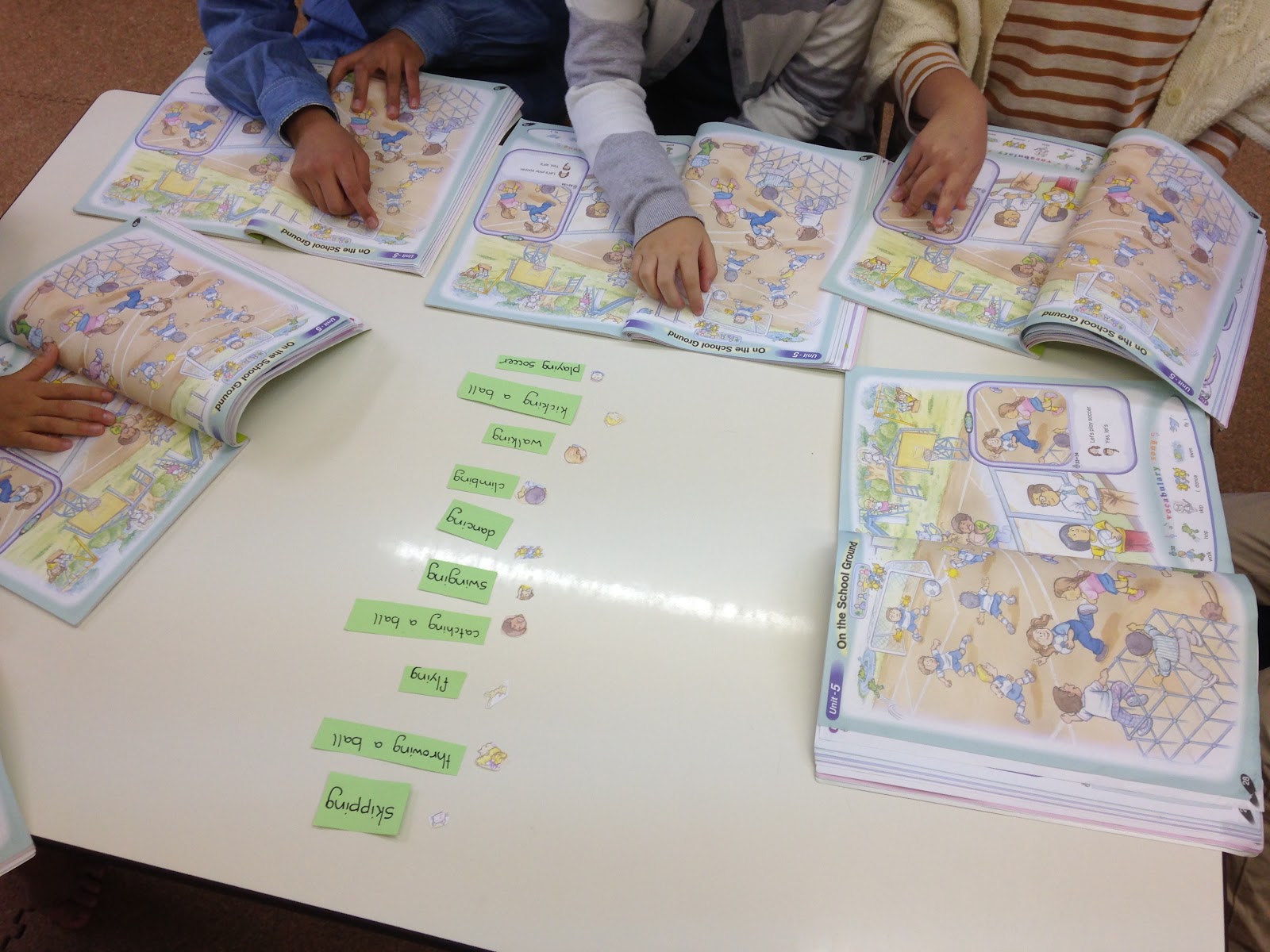
Once the page was open, the transition from the progressive form (~ing) to the simple tense form with “Let’s ~” wasn’t problematic. The illustration of Kaetlyn and Yuko is clear enough.
When the target language doesn’t lend itself easily to a communication activity, it may instead be a nice opportunity to give students a sight-reading experience during which meaningful communication may evolve.












